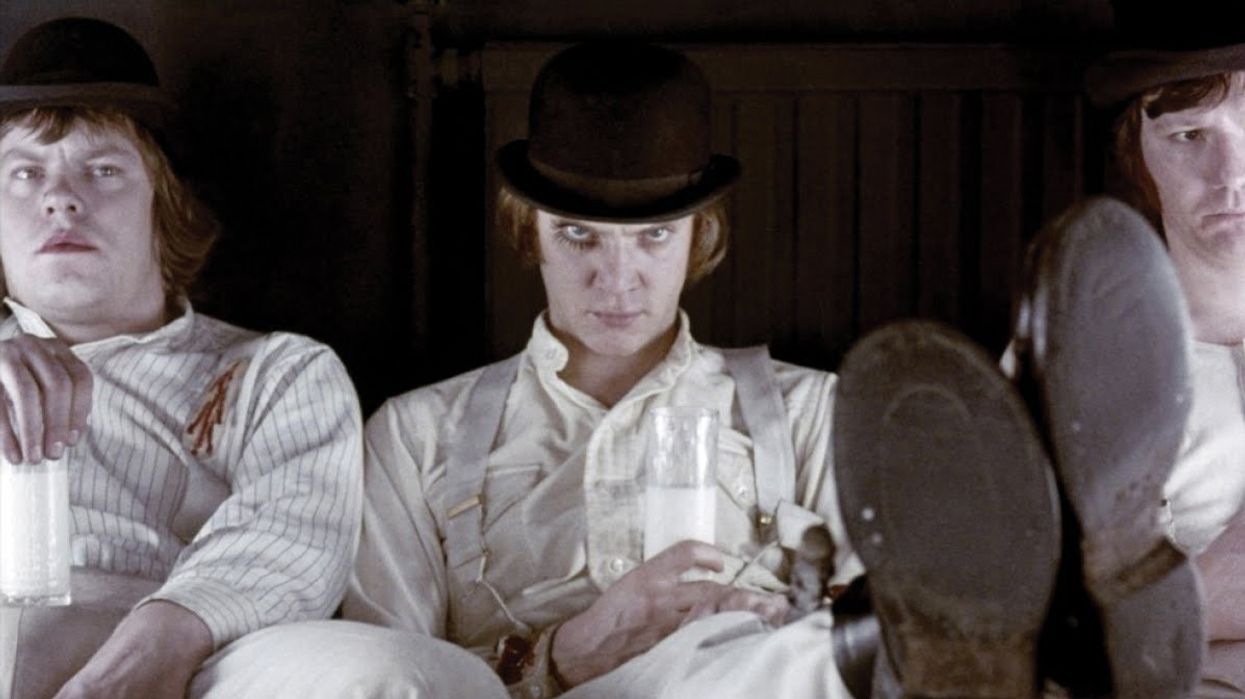'Six Kinds of Light': Rare Documentary Illuminates Stanley Kubrick's Legendary DP
You might not think of this man when you hear Stanley Kubrick's name. Here's why you should.

For all his legendary autocratic tendencies, Stanley Kubrick was not averse to collaboration. Kubrick collaborated with John Alcott, BSC to produce four masterpieces of cinematography. In Alcott, Kubrick found a master of light; a photographer as versatile as the director with whom we worked. Their films — 2001: A Space Odyssey, A Clockwork Orange, Barry Lyndon, and The Shining — are all singular achievements, yet they are united by their fierce originality.
A rare documentary highlights this legendary collaboration. You can watch it below:
Alcott's all-too-short career began while working under legendary D.P. Geoffrey Unsworth on the epic, years-long shoot of 2001. Kubrick hand-picked Alcott to take over when Unsworth had to bow out of the production due to conflicting commitments. Alcott worked with Kubrick on the front-projection technique that made the "Dawn of Man" sequence look so realistic, even though it was shot using footage on a soundstage in England. The camerawork in 2001 is so incredible that even today, in the age of movies like Gravity, this film has the power to awe with its imagery.
The next film on which they collaborated was an adaptation of Anthony Burgess's novel A Clockwork Orange. Photographically, it was the obverse of 2001's clean, white symmetries and minimal menace. It was also shot on location, with only a few exceptions (the Korova Milkbar set, an iconic vision of decadent gloom).
After MGM pulled funding for his Napoleon project, Kubrick set to work on an adaptation of William Makepeace Thackeray's 1844 novel of an 18th-century social climber, The Luck of Barry Lyndon. This film presented unique challenges; Kubrick felt that it was vital for a film set in the 18th century to have as little artificial light as possible. But how would they shoot a night scene on film without electricity?
Kubrick also communicated to Alcott his desire for a painterly aesthetic (English artists Thomas Gainsborough and William Hogarth were key points of reference). The film makes use of several slow zoom shots that either create a still-life image and move slowly in until Barry is trapped inside the frame, or vice versa. It is as if the characters are trapped, framed in a painting. These zooms occur throughout the film:
In an interview with American Cinematographer magazine, Alcott addressed many of the issues he faced on the film. Though it's commonly thought that no artificial light was used on the film, the crew actually made use of mini-brutes to simulate sunlight coming in through windows; they also used Lowells in umbrellas for fill.
But that was all. Beyond that, many of the scenes were shot by candlelight.
Alcott explained: "Stanley finally discovered three 50mm f/0.7 Zeiss still-camera lenses which were left over from a batch made for use by NASA... We had a non-reflexed Mitchell BNC which was sent over to Ed DiGiulio to be reconstructed to accept this ultra-fast lens. When you looked through this lens, it appeared to have a fantastic range of focus, quite unbelievable. However, when you did a photographic test you discovered that it had no depth of field at all... We had to literally get it down to inches on the actual scaling."
Their final film together, The Shining, made use of the newly invented Steadicam. Alcott commented in another American Cinematographer interview that Kubrick "suggested we let the practical lighting work for us without using any actual studio lights. It wasn't easy. At first, it was quite worrying."
In addition, some of the actors had difficulties with the cinematography on the film. Here's Shelley Duvall discussing her and Jack Nicholson's unhappiness with the decision to shoot them with 18mm lenses (which distorted their features and made them look less than movie star glamorous).
Alcott did not participate in the shooting of Full Metal Jacket because of other obligations, and he tragically suffered a heart attack and died in 1987 at age 55. The British Society of Cinematographers created the John Alcott ARRI Award in his honor.











